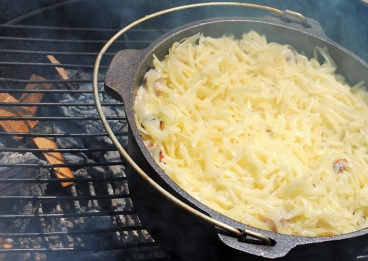Here are some handy cold-weather camping tips that can make camping more comfortable through the fall/winter camping season. Stay warm!
1. Keep hydrated during the day and avoid drinking lots of fluids at night, so you won’t have to go to the bathroom in the middle of the night.
2. Eat a big dinner with lots of calories. Calories are a unit of heat, without them the furnace won’t burn hot.
3. Keep a snack with you for the middle of the night, so if you do wake up cold you can replenish lost calories and warm back up again.
4. Go to bed warm. Warm up by taking a brief hike around camp or doing some jumping jacks. If you wrap a frozen salmon in a sleeping bag, will it stay frozen? Yes, because your sleeping bag will insulate cold or heat, just like a Thermos.
4. Select a protected campsite out of the wind and off the valley floor and other low areas where cold air settles. A good rule is to be about 50 feet above the valley floor.
6. Fluff up your sleeping bag with vigor to gain maximum loft before you climb in.
7. Use a good insulating pad between you and the ground. Studies show that what you have under you is more important in keeping you warm than what is on top of you.
8. Wear a stocking hat to bed, you lose most of your body heat through your head.
9. Keep your nose and mouth outside your sleeping bag. Your breath contains a great deal of moisture that can cause dampness to collect in the bag as you sleep. To keep your face warm, wear a balaclava or wrap a scarf around your face.
10. Roll the moisture out of your bag each morning when you get up (roll from foot to head), then leave it open until it cools to air temperature. If weather permits, set it out to dry.
11. Use a layered sleeping system (i.e. sleeping bag, liner, half bag, bivy sack). A layered system helps to remove the frost buildup that naturally occurs when your body warmth meets the cold air (a concern if you’re staying out multiple nights).
12. Avoid overheating at night and make sure you go to bed dry. Being too warm produces perspiration, so vent your bag if needed or take off your stocking hat.
13. Make sure your feet are as dry as possible before going to bed. This can be done by having a pair of dry sleeping socks in your bag for sleeping only. Also, you can “dry” wash your feet with a good foot powder that contains aluminum chlorohydrate, which helps dry the skin and reduce perspiration.
14. Wear loose fitting clothing to bed so it doesn’t restrict circulation.
15. Keep your sleeping gear clean. Dirt clogs air spaces in the material and reduces insulation value making it harder to stay warm.
16. If you have cold feet, sleep with your feet together in an elephant foot or half bag. It’s a bag that uses the principle of the buddy system, where the feet share heat instead of being isolated, much like mittens are warmer than gloves. The bag slips over your feet and legs and then drawstrings pull it shut or you could just use a fleece jacket wrapped around the same area.
17. Fill a water bottle with hot water before you go to bed and then strategically place it at any cold spots in your sleeping bag. Just make sure it has a screw on lid like the Nalgene bottles. A variation of this is to use disposable heater packs or hand warmers, which costs a little extra money. Or, in the old days they would take some heated rocks from around the campfire and place them in a wool sock. Just make sure they’re not too hot. (Editor’s note: If using this old-fashioned method to keep warm, make sure that the rocks are completely dry before heating. Trapped steam may cause so much outward pressure that the rocks may explode.)
















